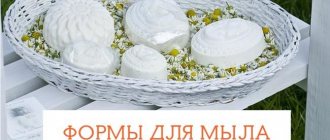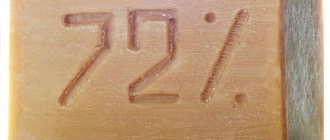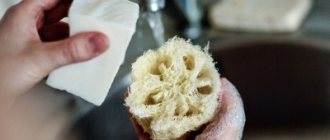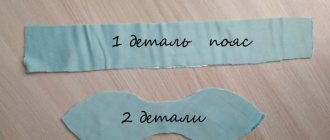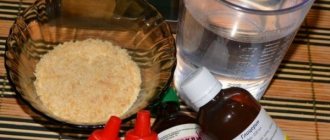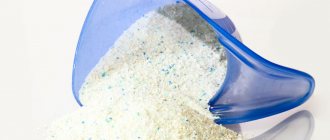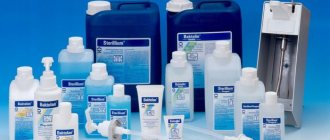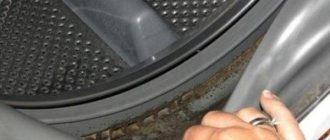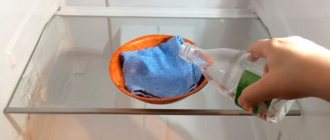Aromatic handmade soap with soft oils in its composition can calm or improve your mood, remind you of the warm coastal coast or transport you to the winter, to the smell of pine needles and tangerines with cinnamon. Unique aromas, interesting and delicate texture distinguish the quality of handcraft from manufactured products. Soap base is the most important element and the first step in the soap making process. In this article we will explain in detail how to prepare soap base at home.
What is soap base
Soap base is a technological soap produced by saponification of fatty acids. Soap making is a fairly simple process that occurs by mixing fatty acids or oils with alkali. The result is soap itself and glycerin. In home soap making, this is called the base, to which various fragrances, cosmetic or medicinal additives are already added.
Despite the fact that several different types of base are used in the manufacture of soap and other cosmetics, their chemical composition is approximately the same.
The most common soap bases include:
- Distilled water;
- Alkali;
- Glycerin (it is responsible for the tenderness and hydration of the skin);
- Surfactants (surfactants);
- Essential oils (selected individually depending on the desired result).
So the base for soap with your own hands is created from scratch from almost those ingredients that every housewife already has in her kitchen. The main advantage of homemade soap is precise confidence in the ingredients and a clear selection of ingredients to suit your skin’s specific characteristics.
The soap base consists of water, as well as glycerin, sorbitol, various organic acids and their derivatives, and sodium chloride.
Additional Information! The history of soap began approximately six thousand years ago. At different times, quite unusual, although no less effective, means were used. The easiest way to cleanse your skin is to use sand. Wood ash mixed with water was also used for washing.
Sometimes various chemicals are added to the base to improve the quality of the future soap.
Why is homemade soap better than store-bought soap?
Homemade soap compares favorably with store-bought soap in several ways, and most importantly, by following simple instructions, you can get a fragrant and natural product from simple and inexpensive ingredients.
DIY soap: advantages
There are many advantages of homemade soap over industrial samples:
- With a little theory and practice, you can make soap for your face and body that suits your skin type or has healing properties.
- Its composition is more natural and environmentally healthy: in addition to fatty acids and alkalis, it contains valuable plant extracts, oils and other caring components.
- The price of a finished product made at home is lower than store-bought, and even remnants can be used rationally.
- The hobby of soap making brings not only practical benefits, but also becomes a creative activity, as a result of which you can get masterpieces pleasing to the eye in the form of various figures, flowers and animals, decorated with decorative elements.
Types of soap base and its composition
Today, the most common soap bases are white, clear, and freestanding - organic. The transparent soap base is also called glycerin, and it softens the skin well, providing hydration and softness for a long time. The white base contains the addition of titanium dioxide, which is often used in cosmetology to maintain skin tone. Organic base suitable for sensitive skin. It contains coconut and palm oil and uses a minimum of chemicals.
There are no chemicals in the organic base to make it lighter or more translucent.
Note! To give your skin a healthy look, you can use ginger oil, which increases blood circulation. Chamomile oil has an immunostimulating effect. Rosemary is excellent for skin diseases, speeding up the healing process.
Soap base can be not only in solid form, but can be in three types:
- Solid - used for making classic soaps or artistic works.
- Soft - used for scrubs, cream soaps.
- Liquid – used to make liquid soap, shower gels and detergents.
Transparent and white base
Thanks to the large amount of glycerin included in the transparent base, it perfectly moisturizes and nourishes the skin. It is thanks to transparency that you can achieve the desired depth of color, which is not possible when using other bases. Great for a bright, rich palette or a subtle sheer layer with a defined shade.
The most common, basic soap base comes in two types - transparent (marked with the letter “T” on the package) and white (marked with the letter “W”).
The white base has shades from snow-white to beige. It contains dye E171, also known as titanium dioxide. This is the main distinguishing feature of the raw material.
The white base differs from the transparent one only in that, among other things, it also contains titanium dioxide - it is this that makes the base opaque and white.
Organic base
It is the most sought after of the foundations due to its natural ingredients. It has a yellowish tint because it does not have a whitening component. It can be easily distinguished by its appearance. It looks like a transparent base.
It is marked with the abbreviation “ORG” and is usually sold at a higher price than the regular one.
Creamy soap base
Ideal for creating scrubs and peelings. Helps you create jewelry using solid soap. It resembles white grain cream. Easy to use and does not require additional “cooking”.
To create a mousse or foaming cleanser or a creamy body and hair soap, you will need a creamy soap base.
To prepare a scrub, you need to add base and essential oils to the soft soap base and do not forget the abrasive (exfoliating) particles. In natural form you can use: grape and apricot seeds, sugar, salt, coffee and oatmeal.
The creamy base does not harden and always remains soft.
Liquid soap base
It is a transparent jelly-like liquid. It has a number of advantages: it foams well, perfectly cleanses the scalp and face, soothes irritated skin and rinses off perfectly. Has a neutral pH level.
Liquid soap, shampoos and shower gels are created from a liquid soap base.
A few words about additives
The list of recipes for making homemade soap with natural ingredients is endless. To create a product with a scrub effect, you can use ground coffee and loofah.
Not only essential oils, but also food flavorings and special cosmetic fragrances will help make soap fragrant.
You can get a pleasant brown tint by adding cinnamon to the mixture, and calendula flowers will give you a yellow-orange color. Among the harmless synthetic dyes, it is worth noting pigments that dissolve in the finished product and quickly and effectively color the soap base in the desired color. Additionally, you can add mother-of-pearl to the composition, and for transparent varieties, choose shiny glitter.
And finally, it remains to mention how to make the shape of the bars original. To do this, you can use ready-made silicone molds, which are sold in abundance on various resources. And, of course, don’t forget to fantasize and make your fantasies come true!
Everything for soap making
Where can I buy soap base?
Soap base can be purchased at specialized soap-making stores or ordered online with delivery to the post office or home. But it is worth remembering that handmade soap will always be the best.
First of all, you need to decide what kind of cosmetic product you are going to make.
Honey soap
Components:
- base (matte or white) – 100 g;
- liquid honey - 2 tbsp. l.;
- flavoring "Honey" - 5 drops;
- yellow dye - 3 drops.
How to make soap with your own hands: a step-by-step recipe for honey soap
Preparation:
- The crushed base must be melted.
- After melting, pigment is added to it.
- Then you need to cool the product a little and pour honey and flavoring into it. They should not be added to the hot mixture to preserve their beneficial properties.
- The resulting mass must be quickly poured into a container. The product hardens within 1 hour.
How to make your own soap base
First of all, you need to worry about safety measures: purchase gloves, goggles and a respirator. You will also need control and measuring instruments: scales, a pH meter or indicator strips, which allows you to make sure that the alkali is neutralized and the soap is ready and can be used. There are several types of home soap making.
Many soap makers, not only experienced but also beginners, often begin to wonder whether it is possible to make a soap base on their own.
Soap making from baby soap is the best way for those who are just starting their first steps in this business. Store-bought baby soap must be crushed in any convenient way and melted in a water bath, then add the necessary base and essential oils. You can add herbal decoctions to make the soap even more beneficial. The most important advantage of this method is the availability and low cost of the starting material (baby soap).
Many soap makers, especially beginners, not wanting the extra hassle of choosing and purchasing a base, use instead the baby soap that has been familiar since Soviet times.
But along with this, you will also have to take into account the disadvantages, namely the own smell of baby soap. For this reason, it is recommended to choose soap without fragrances, in order to avoid obtaining a not very pleasant final smell. It is also worth remembering that soap takes a long time to melt and you will have to be patient. Also, unfortunately, this method will not work if the transparency of the soap was intended.
The disadvantage of such a base is that it takes longer to melt than a professional one, and can retain a specific smell even after it is processed into another product.
Hot method of making soap
Making soap using the hot method begins with obtaining soap “dough” using the previous technology. Instead of adding flavors and colors, it should be placed in a slow cooker for further cooking. Within an hour, under a closed lid, real magic will happen! The soap will rise and fall, hardening in some places and maintaining a gel-like consistency in others.
After an hour, the resulting composition must be turned off and mixed thoroughly. Now is the time to add the remaining ingredients to it. After this, pour the mixture into the mold and leave overnight. After hardening, the soap will be completely ready for use, and you won’t have to wait several weeks for this!
Soap from scratch
It is not for nothing that this method has such a name, because soap makers monitor each of the processes of creating soap from the beginning to the final result. To begin the process, you need to make sure that the room is well ventilated. We have not forgotten about protective equipment: gloves, respirator, goggles. Since you have to work with alkali, you need to prepare a neutralizer: vinegar essence, citric acid, or you can use sour fruit juices.
Making homemade soap from scratch is a fun creative process.
Depending on what kind of base you want to get, use:
- Solid base - alkali in the form of caustic soda;
- The liquid base is potassium hydroxide.
Approximate ratio of all components (quantity and proportion may vary depending on the specific recipe):
- Coconut oil - 1 part;
- Castor or palm oil - 1 part;
- Water and alkali - water 33%;
- Glycerin - 30-95% of the weight of the soap before adding glycerin.
Making soap at home from scratch can seem like a super difficult process for beginners.
However, there is nothing complicated about it. It is necessary to prepare soap in any container that is not afraid of heat. Stir only with a wooden spatula.
Pour lye into a bowl of water. Stir until completely dissolved. Next, we prepare the oil base; a soap maker’s calculator (can be found on the Internet) will help you with this, which will accurately determine the required proportion of oils for the soap base of the required mass. Then liquid oils are applied. And everything is thoroughly mixed again.
The ingredients must be measured strictly according to the recipe, otherwise you can harm the skin when washing with such soap.
Important! It is necessary to ensure that the alkaline solution and oils are at the same temperature, approximately 40-50 degrees.
If you notice lumps, you can get rid of them by straining. Bring the soap to readiness in a water bath. The pH measure will help determine readiness; it should show a value of 7-8 units, which means the readiness of our soap.
The temperature of the oils and base should not differ by more than 10°C. Everything should be thoroughly whipped with a blender and poured into the mold.
Also in practice, 2 types of making soap from scratch are used:
- Hot method - during the soap making process, all ingredients are heated. With this method, you use the soap immediately after it hardens.
- Cold method - the ingredients themselves heat up during the reaction with alkali. Soap needs time, about 4-6 weeks, to undergo the process of neutralizing the alkali.
To ensure that the surface of the finished soap is smooth, without accumulation of bubbles, the mold and visible parts are sprayed with alcohol, which is first placed in a spray bottle.
Handmade soap is a great option as a hobby or additional income. But the main feature of home soap making is full control of the entire process and precise confidence in the composition.
Natural soap has much more benefits than store-bought soap full of chemical ingredients.
Common mistakes
When starting out, many beginners may make the following mistakes:
- due to the large amount of oils added to the base, the soap will not foam well, and droplets of fat will appear on its surface;
- Before adding, dry pigments must be dissolved in an appropriate liquid (alcohol, water, glycerin), otherwise grains of dye will settle in the soap;
- if the soap does not thicken when whipped, check the amount of lye;
- if the soap breaks and burns your hands, there is a lot of alkali and little oil in it, add the missing amount to the melted mass;
- if the block is soft and falls apart when cut, it must be left to ripen for another 14 days;
- If holes have formed in the soap, like in cheese, then they may contain oil or alkali: the mass needs to be melted and mixed well.
Homemade soap making has many pitfalls, which can be overcome with advice from experienced soap makers, reading specialized literature and searching for original proven recipes.
